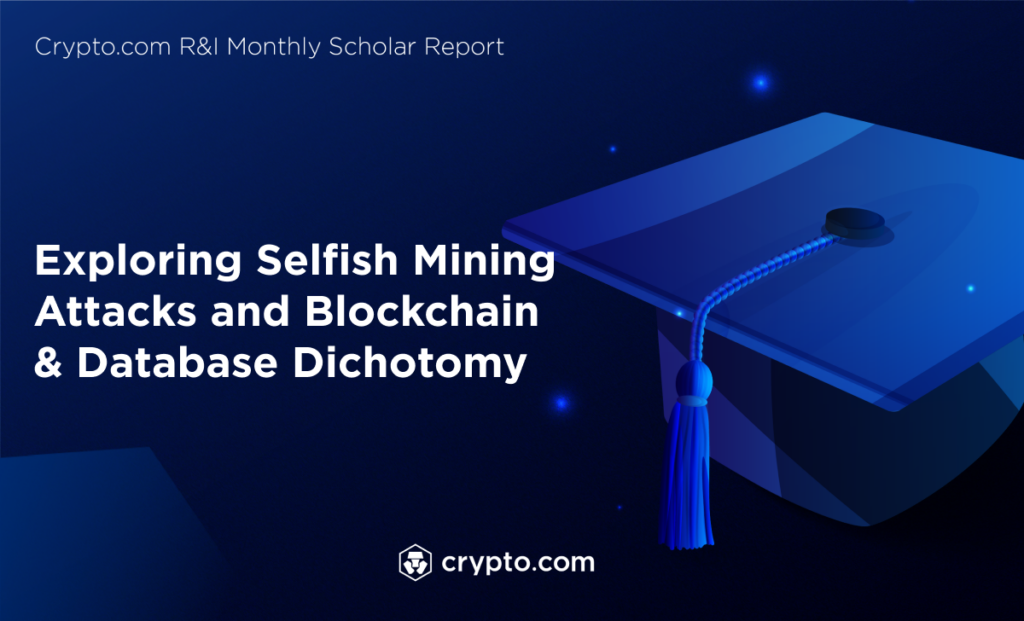
Our monthly scholar article series introduces leading academic research on the blockchain to our community – summarising the key points in easy-to-follow terms. This month, we highlight two research papers on selfish mining attacks and the dichotomy between blockchains and databases.
Selfish Mining Attacks are Exacerbated by Elastic Hash Supply
Selfish mining is a deceitful mining strategy on proof-of-work blockchains in which one miner (or a group) mines a block, withholds it privately, and eventually releases it to surpass the honest miners’ chains to ‘steal’ the mining rewards.
The research paper selected presented made the following contributions:
1. An empirical analysis illustrates that there is a statistically significant correlation between the profitability of mining and the total hash rate, confirming that miners indeed respond to changing profitability. In conclusion, this means the hash supply is elastic.
2. A theoretical analysis demonstrates that selfish mining under such an elastic hash supply leads either to the collapse of a chain (i.e. all honest nodes will leave eventually, despite the low chances of this happening in reality) or to a stable equilibrium depending on the attacker’s initial share.
Blockchains vs. Distributed Databases: Dichotomy and Fusion
Blockchains and distributed databases share many similarities. The second paper presented addresses an important research question: How do blockchains compare to traditional distributed databases?
The analysis focused on four dimensions:
1. Replications – A transaction-based replication model in blockchains has a negative impact with higher latency, while operation-based replication approaches have plain effects on distributed databases.
2. Concurrency – The number of operations per transaction is a key factor that affects concurrency in both blockchains and distributed databases when a large number of transactions pour in.
3. Storage – Compared to distributed databases, blockchain systems can introduce additional storage overhead as the full ledger (i.e. historical data) is maintained among all participating nodes.
4. Sharding – When increasing the number of shards, the performance of blockchains is inferior in terms of transactions per second (TPS) due to their underlying consensus mechanisms.
This body of research is seen as pioneering in future blockchain-database design fusions.
Read the full scholar article here: Exploring Selfish Mining Attacks and Blockchain & Database Dichotomy





